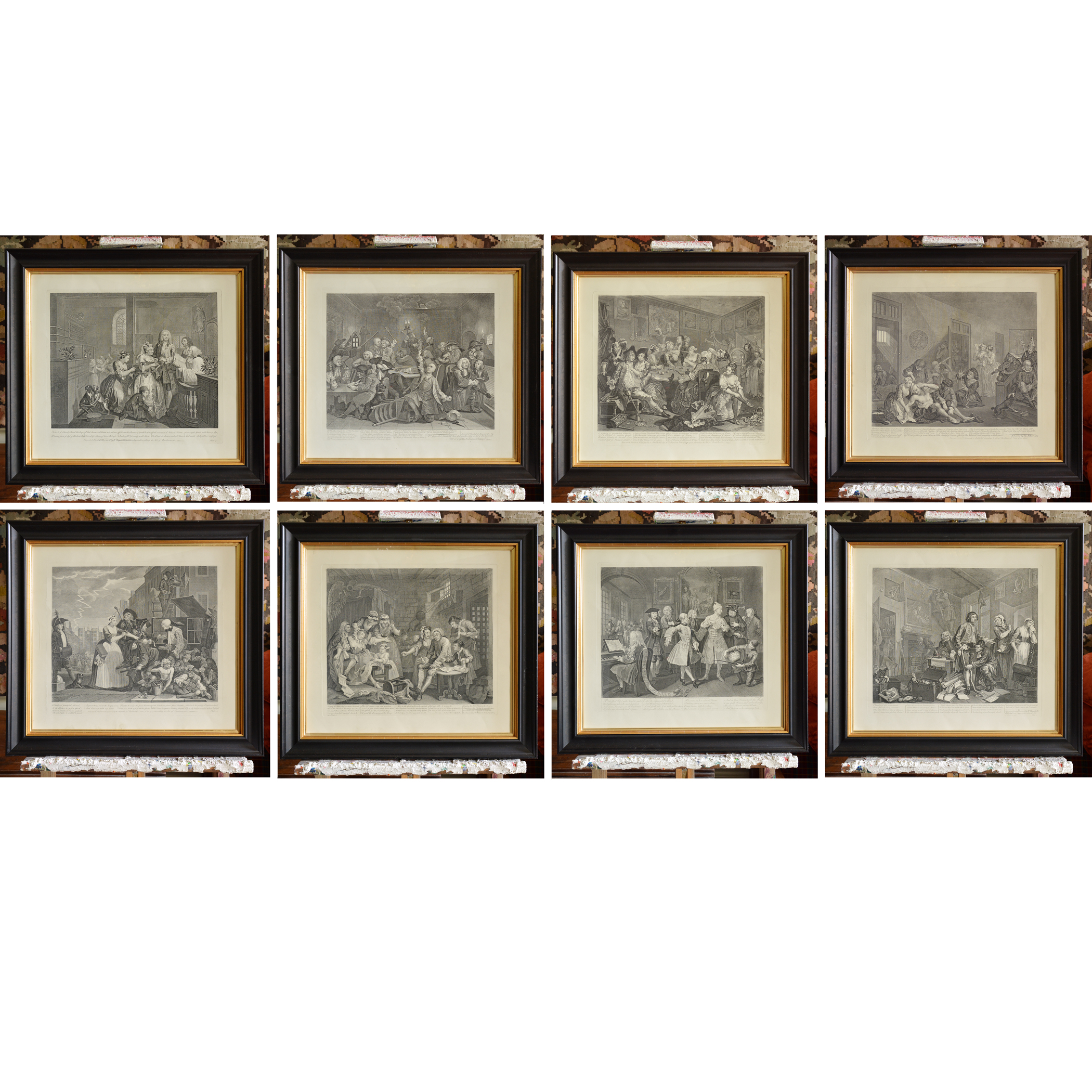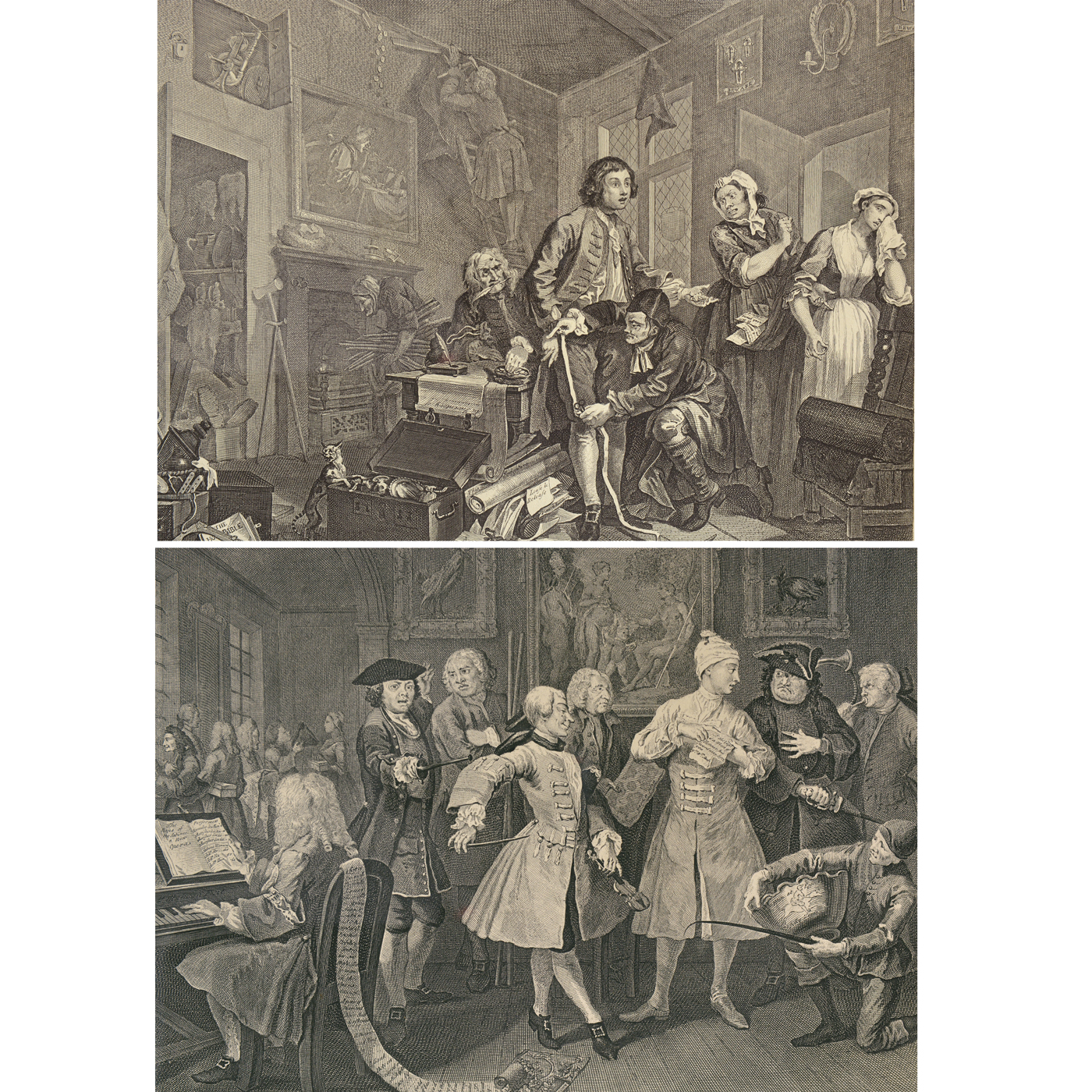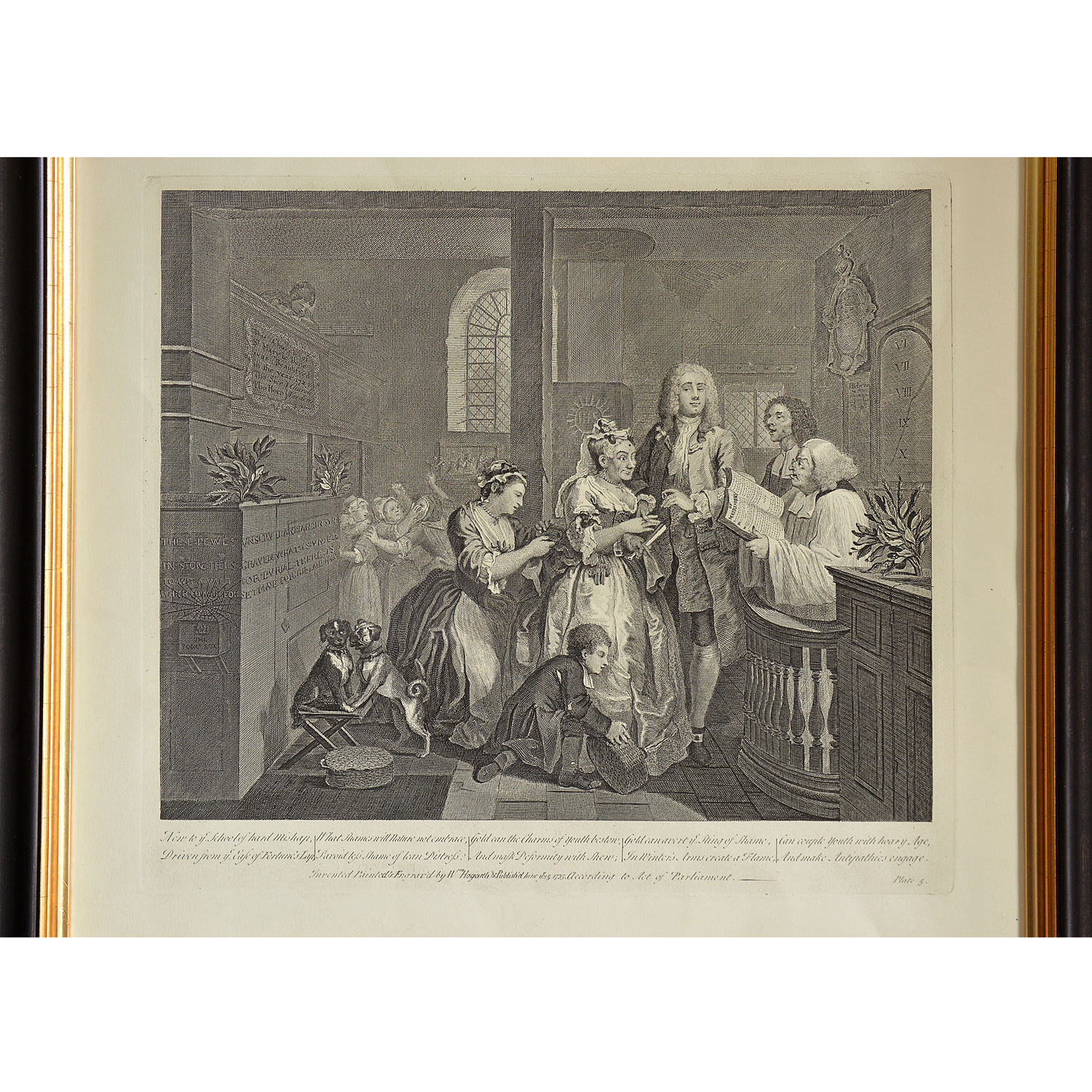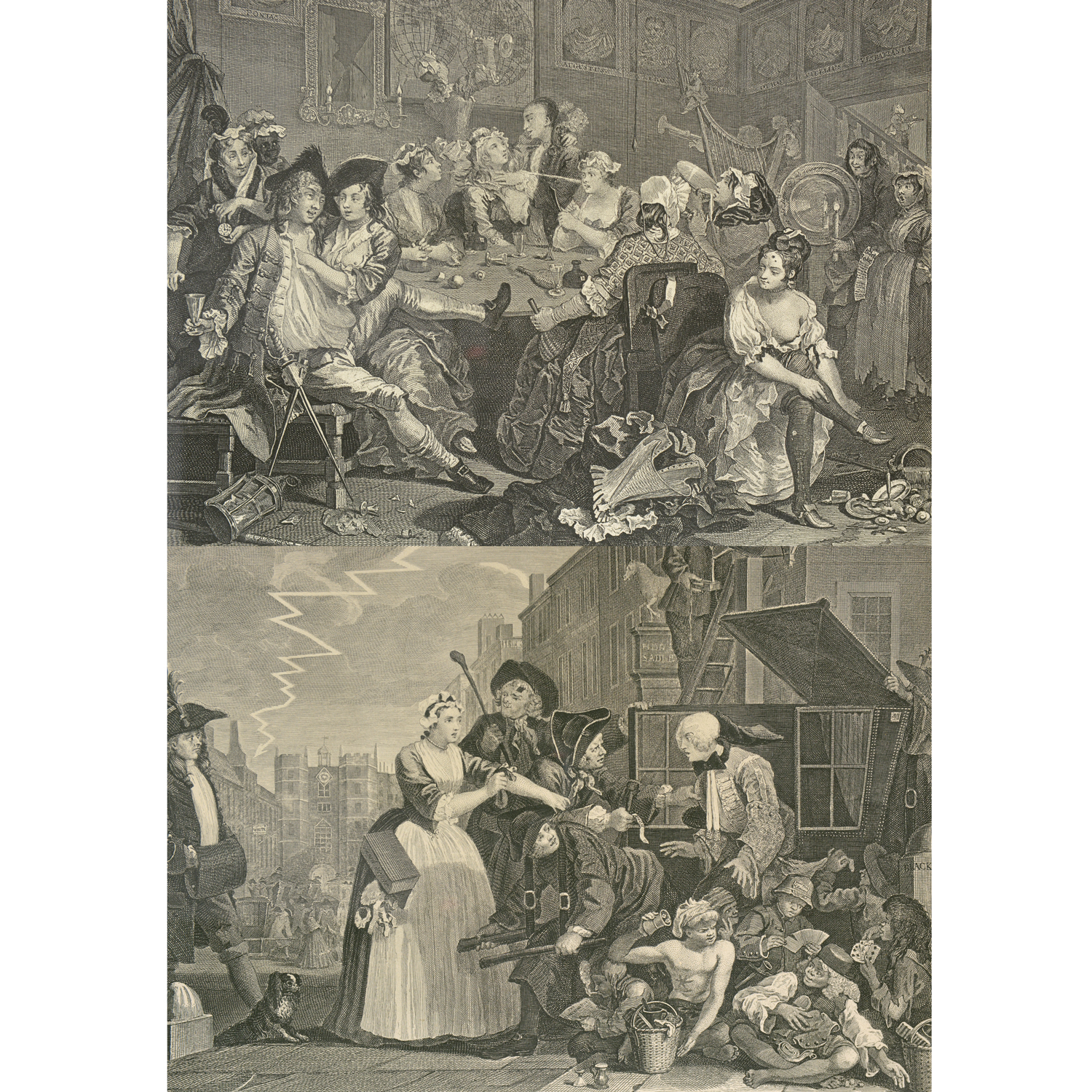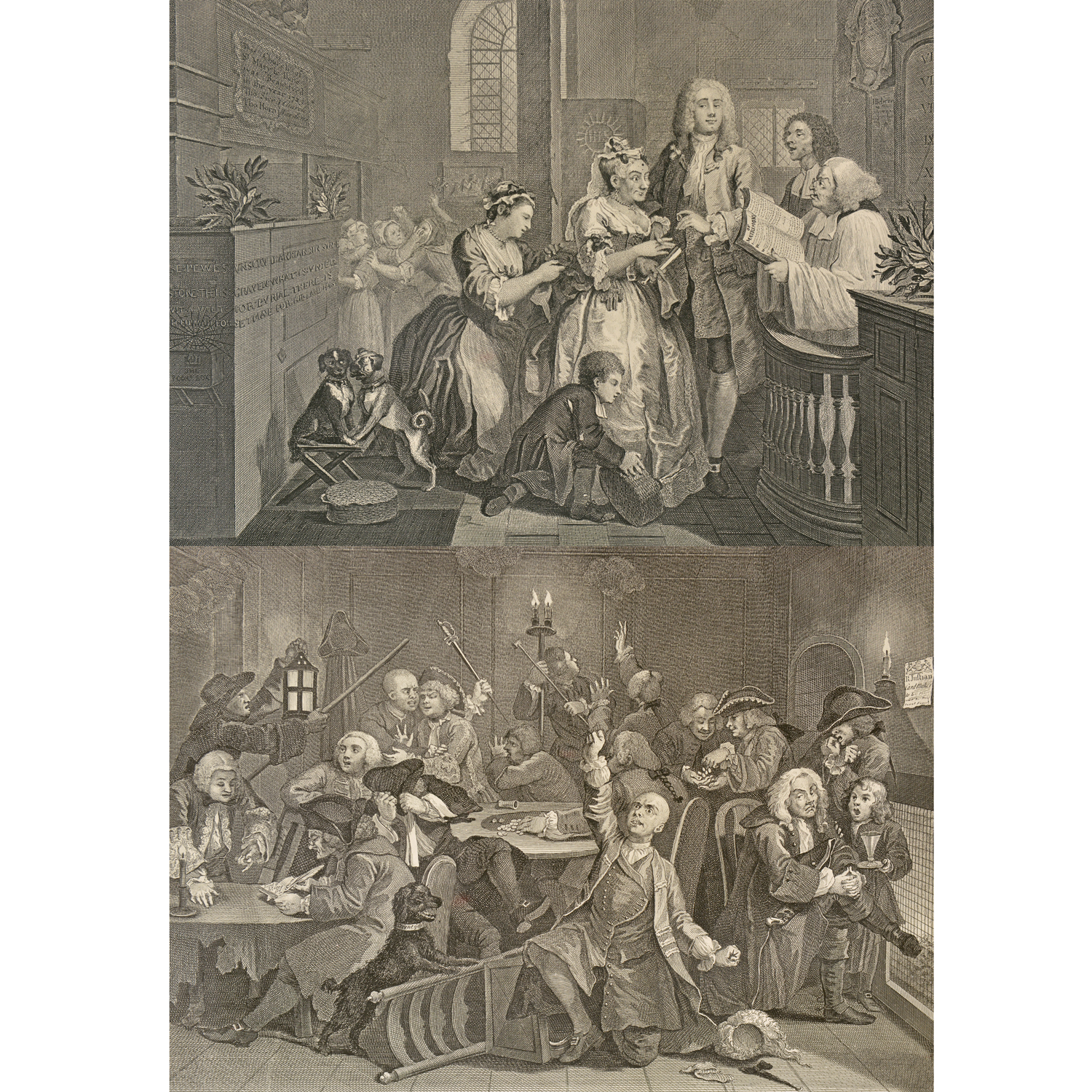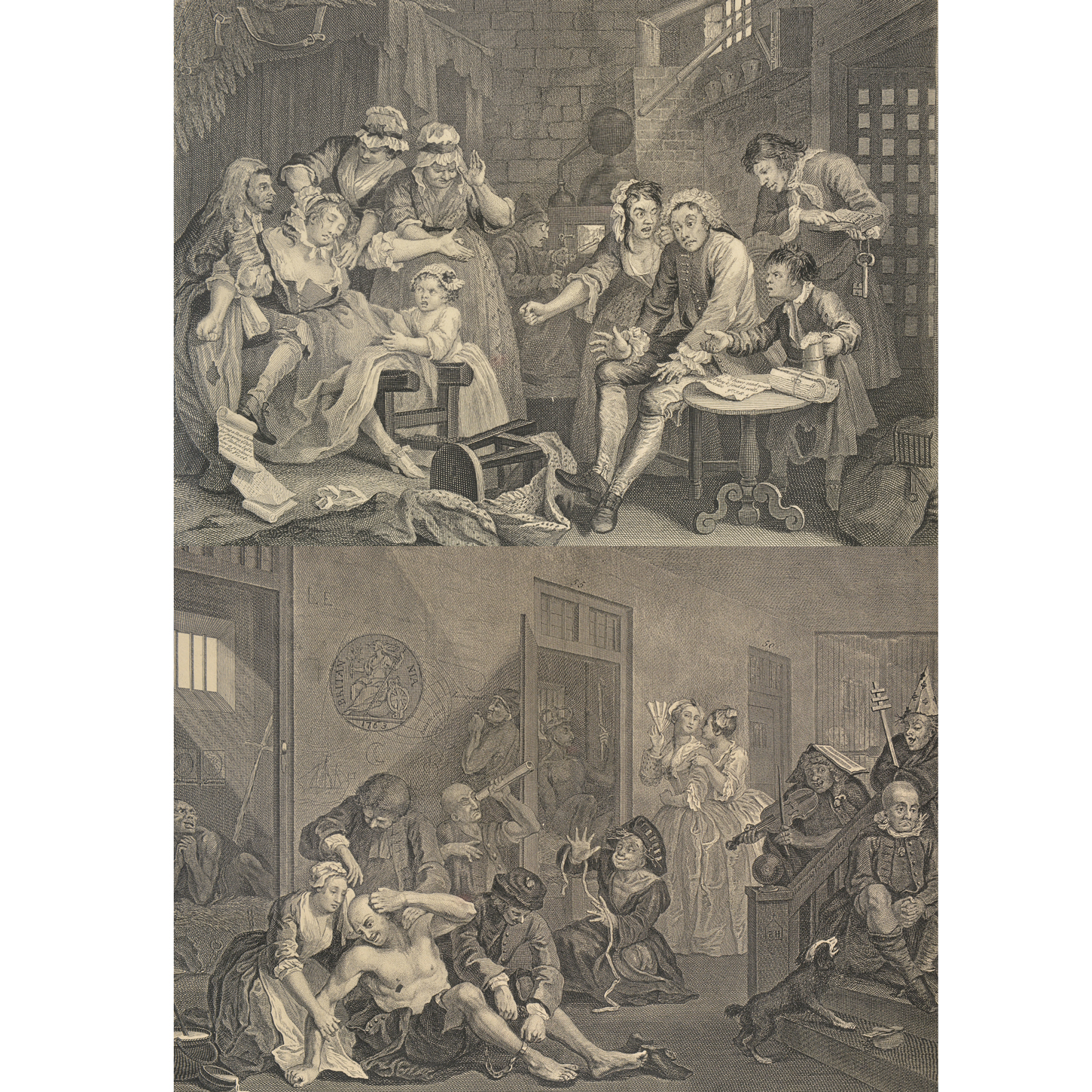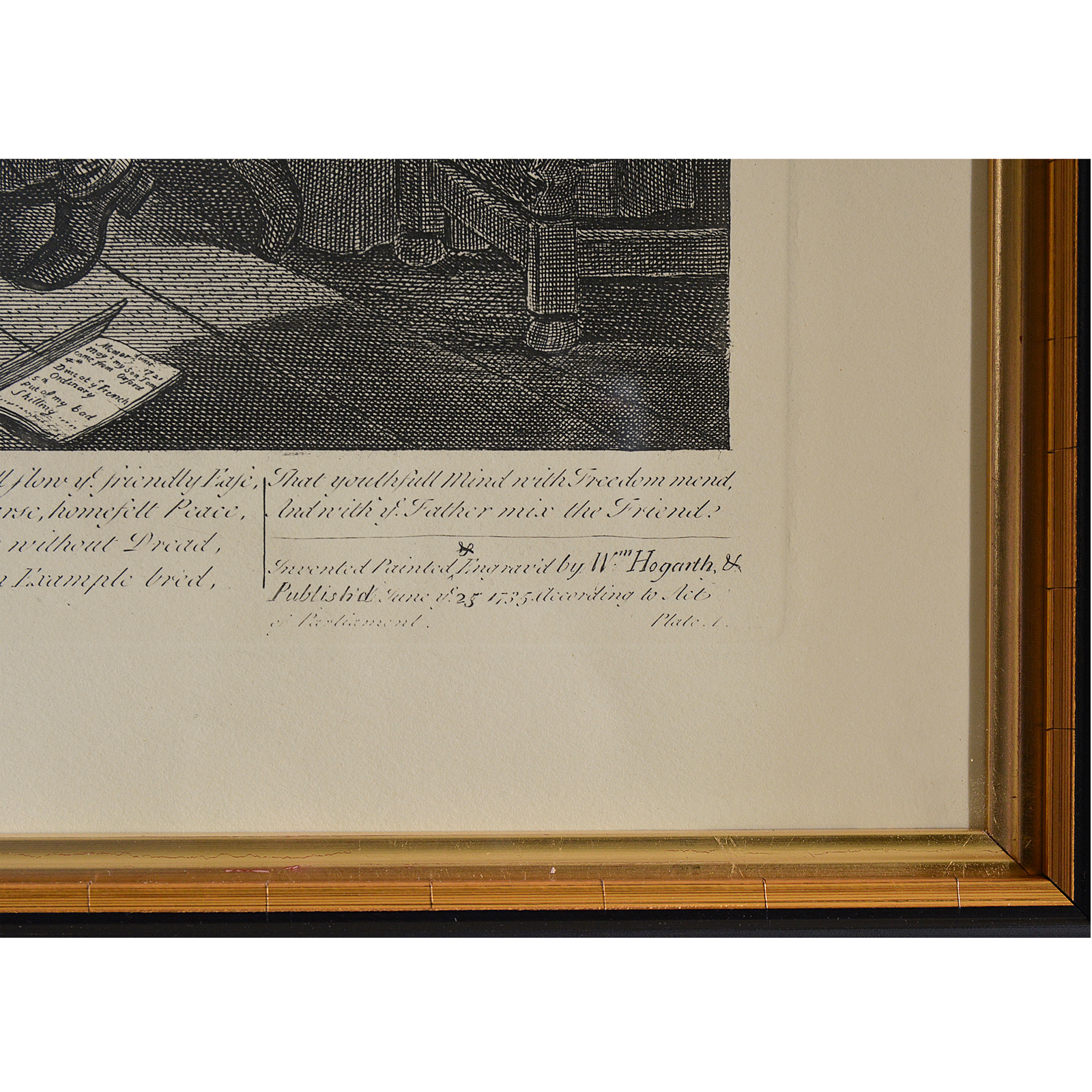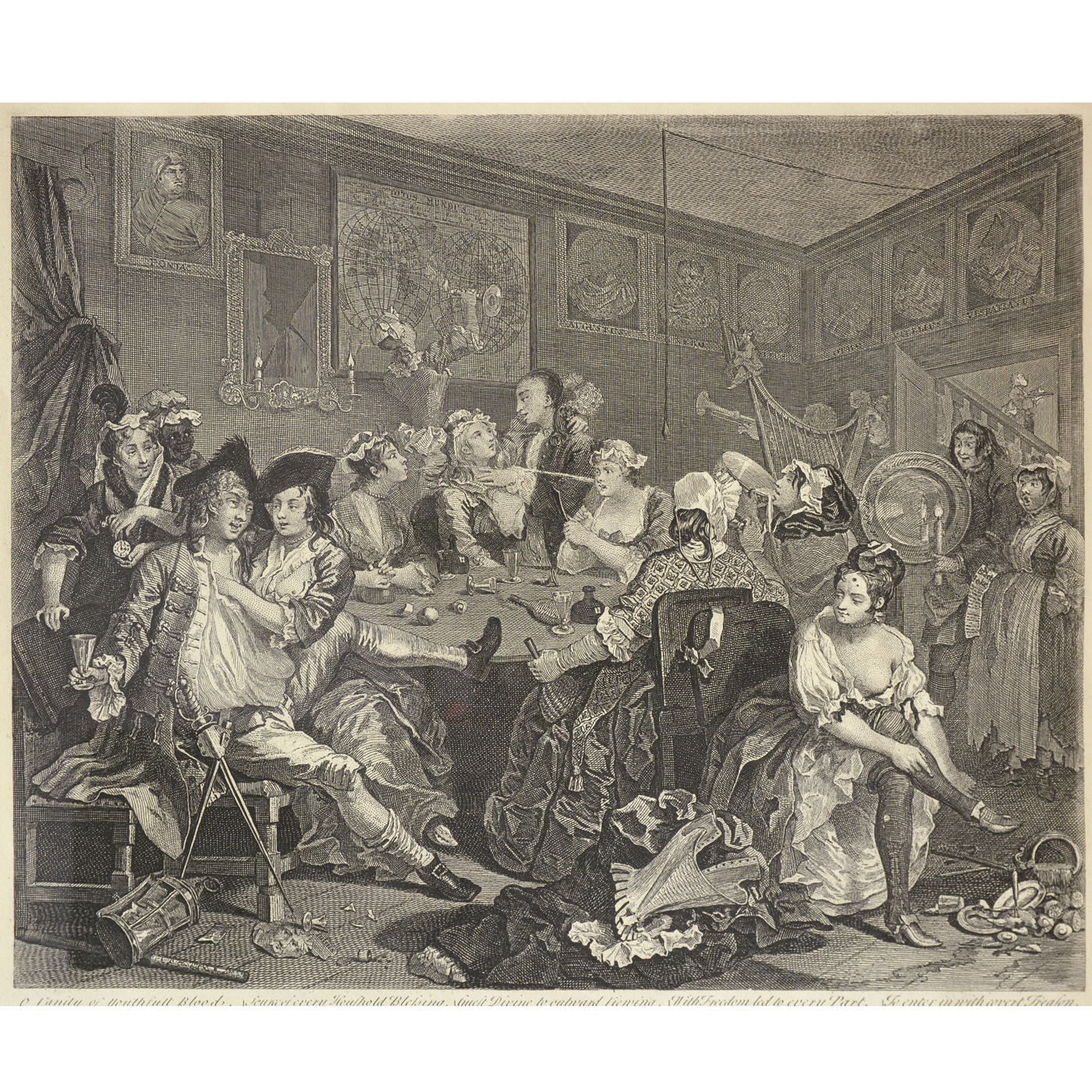No products in the basket.
Archived Stock - This item is no longer available
The Rakes Progress by William Hogarth (1697-1764). A set of eight copper-engraved prints
The final edition published from Hogarth's original plates, by Baldwin, Cradock & Joy 1822
When Hogarth embarked on his second Progress in 1733, ‘the rake’ was a long established symbol of masculine waywardness and depravity. An inveterate consumer and ‘man of leisure’, the rake of convention fritters his fortune, usually inherited, on sex, drink and gambling.
A set of eight original copper-engraved prints, framed in black with gilt slip
SOLD OUT
In stock
Hogarth's most celebrated set of prints based on the original paintings housed n the Sir John Soane Museum.
1. The Heir
Tom Rakewell, has inherited a fortune following the death of his miserly father. Tom is pictured in his father's house and is attempting to pay-off a servant girl, Sarah Young. She holds a gold ring, revealing that Tom has seduced her with the promise of marriage. Behind Tom, a lawyer, employed to compile an inventory of his dead father's estate, is stealing gold coins. A starved cat searches for food in a chest full of silver, whilst servants find treasure hidden in the fireplace and behind wall hangings.
2. The Levée
The second scene sees Tom in his new palatial lodgings where he is holding a morning levée in the manner of a fashionable gentleman. Amongst the assorted visitors who have come to offer their services is a jockey, a dancing-master (with violin), a music teacher, a landscape gardener, a poet and a tailor. On the wall behind hang some of Tom's recent acquisitions three Italian paintings.
3.The Orgy
It is three o'clock in the morning and Tom, drunk, is enjoying the attentions of prostitutes at the Rose Tavern in London's Covent Garden. A night watchman's staff and lantern lie beside him; souvenirs of a rowdy night. Two of the ladies are relieving Tom of his watch and in the foreground a woman is undressing ready to perform poses on the pewter dish that is being carried into the chamber.
4. The Arrest
Tom has squandered his fortune and narrowly escapes arrest for debt on the way to a party at St James's Palace. It is Queen Caroline's birthday, also St David's Day, and the two bailiffs wear leeks in their hats to mark the occasion. Tom is saved by Sarah Young, now a milliner, who pays his bail money with her meagre earnings. A street urchin steals Tom's gold-topped cane, whilst a lamplighter, distracted by the commotion, accidentally pours oil on to Tom's wig.
5. The Marriage
Impoverished, but accustomed to a life of luxury and excess, Tom decides to marry an old hag for her fortune. The shabby setting is Marylebone church, which at this time was on the northern fringes of London and well known as a venue for clandestine weddings. Tom is clearly more interested in the pretty young maid then his one-eyed bride. In the background Sarah Young and her mother are being prevented from entering the church. Two dogs in the foreground (one of which has lost an eye) present a grotesque parody of the marriage.
6. The Gaming House
Tom, wigless and cursing his fate, has gambled away his second fortune. The setting is White's Club in Soho. Tom is not the only loser - a dejected highwayman (with pistol and mask protruding from his pocket) sits by the fire, and a nobleman, eager to continue playing, pleads for an advance from a moneylender. The gamblers are oblivious to the fact that the club is on the point of destruction. Only the two croupiers appear to have noticed the smoke curling in from behind the panelling.
7. The Prison
Tom is now an inmate of the Fleet, London's celebrated debtors' prison. Beside him lies the rejected script of a play he has written in the hope of securing his freedom. Other prisoners in the cell are trying similarly hopeless schemes. Tom, exhibiting the first signs of impending madness, has sunk into despair. The beer-boy harasses him for payment whilst the gaoler demands the settlement of his weekly bill. His wife scolds him for having squandered her fortune. Sarah Young, who is visiting with her child, has fainted from distress at the scene.
8. The Madhouse
In the concluding scene Tom has descended into madness and is now in Bedlam. He is surrounded by other inmates who are suffering various delusions. These include a tailor, a musician, an astronomer and an archbishop. In the door to one of the cells is a man who thinks he is a king - he is naked and carries a straw crown and sceptre. Like the real Bedlam, Hogarth's Madhouse is open to the public. Two fashionable ladies have come to observe the poor suffering lunatics as one of the sights of the town. The ever-faithful Sarah Young sits, weeping, by Tom's side.

